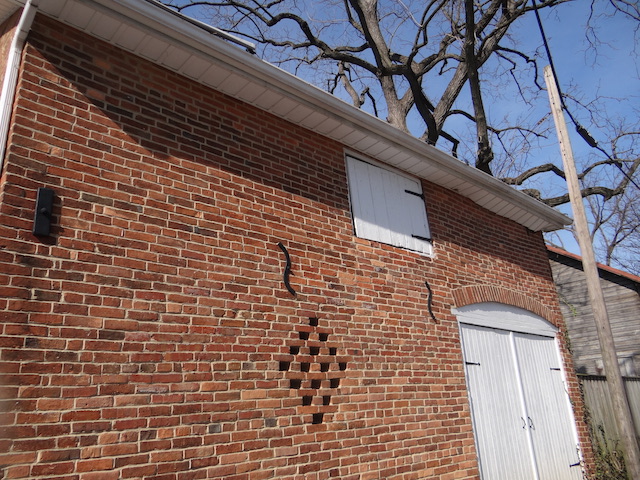When I lived in McKinney, Texas, our 1960-70’s built neighborhood of ranch style houses had their garage access to the rear and public entry and room arrangement at the front. I don’t remember what we actually called that paved rear drive since Texas tends toward signage like “Access Road” and “Frontage Road” that veer off from the main roads. But I can tell you it did not have a Name.
Fast forward to life in the City of Westminster,learning to find my way around town when we first arrived from booming northern Virginia. I was absolutely fascinated by the alleys–they even had actual street names! I made it a point to walk these back streets for the fun of it, to look at the structures behind the houses and what people planted in the rear yards. I also learned you can avoid a traffic backup on the main streets during busy hours if you know which ones to take.
There are various general definitions for alley which derives from the Old French Alee (walking or passage):
- unpaved or paved passage
- between or behind buildings
- rear access or back lane service road
- secondary vehicle network
- may be reserved for pedestrians
In Baltimore, the alleys were used by narrow service vehicles for deliveries of coal and other mundane household necessaries since the rear yard was reserved vegetable gardens, outhouses, trash and things not public.
18th century Annapolis streets were circular which necessitated shortcuts, which became alleys.
In rural Westminster, these alleys seem to have 1 to 1.5 story structures along them behind houses, probably a combination shed, bulky equipment, carriage and for animal needs. Elsewhere is town, these alleys served the railway, industry and other businesses. Clusters of small shops might grow up near ‘tween alleys along Main Street. I suspect the alleys were named for rear delivery purposes.
Most of our alleys in Westminster show up on an 1877 map of the city, some have been altered as the college and business added buildings with multiple access doors and parking areas.
Here are a few that I found looking at Google Maps for routes without seeming house frontage:
- Royer Lane
- 42nd Street
- Cunningham Lane
- Union Alley
- 36th St.
- Wentz Alley
- 35th St.
- 34th St.
- School House Ave.
- Winters Street
- Union Alley
- Kings Lane
- Cover Lane
- 18th St.
- Cross Alley
- 25th St.
- South Street
- Spring Alley
If I had to take an educated guess, Winter’s Street is our longest alley, paralleling Main Street and Pennsylvania Ave. A odd narrow twisting alley goes behind Belair Road Supply to its storage yards. Some alleys from my end of town are on a hill and steep ; kids could have sledded on them in winter in days past. And places like Westminster City Park are surrounded by alleys– Winter St., Long Alley, 16th St and 17th St.
Some city areas are taking over the blighted alleys and making them into a pedestrian space as backyards are spruced up and small shops and boutiques emerge to entice their use. A recent article mentioned how these upscaling alley neighborhoods are placing restrictions on what people can do with their backyards now (large treehouses are not acceptable). Other places (Canada) are now proposing the building of laneway houses on preexisting lots to revitalize some areas.
In Chicago, a Green Alley Program is dealing with the run off problems from paving ( a problem there since runoff is not connected to a sewer system). “With this program, the water will be able to seep through semi-permeable concrete or asphalt in which a colony of fungi and bacteria will establish itself. The bacteria will help breakup oils before the water is absorbed into the ground. The lighter color of the pavement will also reflect more light, making the area next to the alley cooler. The greening of such alleys or laneways can also involve the planting of native plants to further absorb rain water and moderate temperature”. (Wickimedia)




